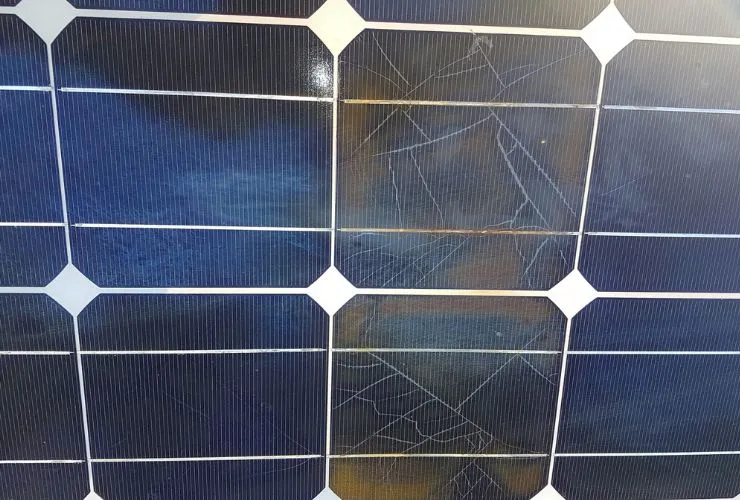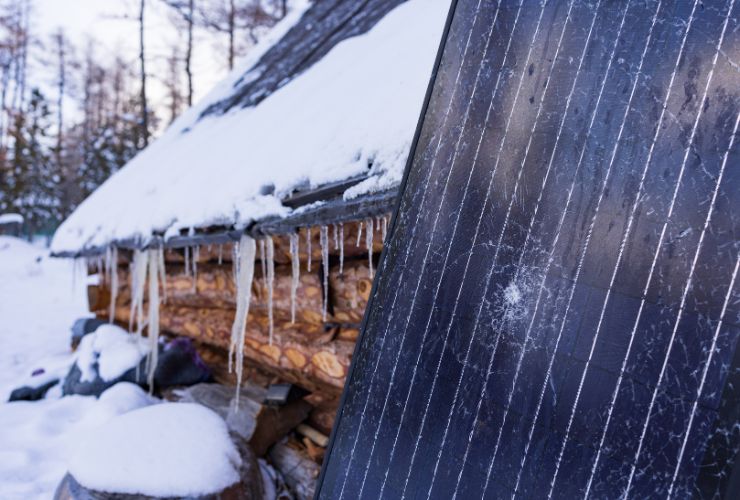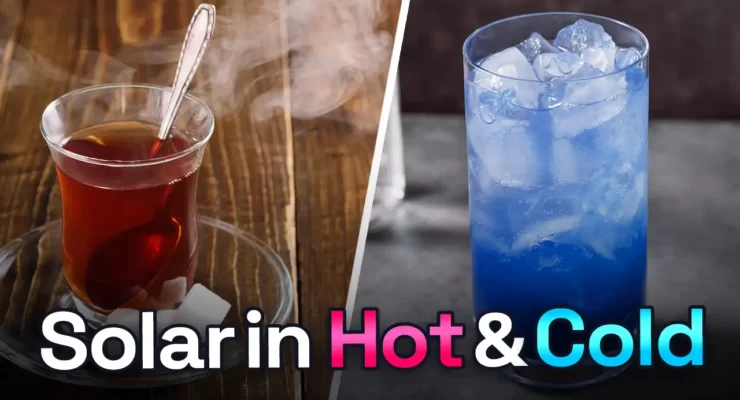Fast read
Solar panels in extreme climates face challenges impacting their performance and longevity. In hot climates, high temperatures reduce efficiency, and thermal expansion may cause microcracks. Dust and sand accumulation necessitate regular cleaning while overheating can damage electrical components.
In cold climates, snow and ice buildup reduce energy production and lead to microcracks. Additionally, lower sunlight intensity in winter affects the overall output. Proper installation, maintenance, and high-quality materials are crucial in mitigating these challenges.
Addressing issues such as clearing snow promptly, installing panels at an angle, and using anti-icing coatings ensures efficient performance in cold regions. By implementing appropriate measures, solar panels can operate reliably in extreme climates, providing sustainable energy solutions.
What can happen to solar panels in extreme weather?
Depending on the panel technology and quality, for every degree above 25⁰C, a panel gets, it loses between 0.3 to 0.5% in performance. When exposed to sunlight, solar panels are, on average, 20-25⁰C hotter than the ambient air temperature. On hotter days, panels can lose 20% efficiency from their rated capacity. On cooler days, performance increases due to heat. However, as this is winter, there is also less and weaker sunlight. Extreme weather changes create additional stress on the panels, affecting their integrity and leading to stress-related damage and deterioration.
Why does this happen?
Solar panels consist of various materials, including silicon, silver paste, metallic copper wires, poly composite materials, glass, and aluminium. These materials have different properties so they expand at different rates as they heat up. This creates an increasing amount of stress about the bonds and connections between the components, which can cause damage to the panels. This is particularly apparent for poorly manufactured panels with limited quality control.
Types of damage
Damage can be seen with the bonding and connection between the cell surface and metallic busbars, with busbars lifting or cracking. Soldering points connecting one cell in a panel to another can also crack and break from the continued stress of temperature extremes.
Solar cells with inconsistencies, weak spots, and constructs can see microcracks develop. The heat combined with the moisture of high humidity can also permeate the back sheet and seep into the EVA and cell structure to create corrosion and discolouring of the panel, affecting performance.
The glass expansion within the aluminium supporting frames can also cause issues, especially when adjoining panels in an array have not accounted for sufficient clearance (a recommended 5 to 10 mm). Where panels are installed butted together without a gap the thermal expansion from the glass and aluminium frames creates pressure between adjacent panels butted together. This stress and pressure result in the glass cover shattering from this pressure.
A specific performance risk that has come to light over recent years is Light and Elevated temperature-induced degradation. This is where the combination of heat and humidity permeating the panel creates a process of accelerated solar panel degradation, in some cases seeing a loss of over 30% within a few years. Advanced solar panel manufacturers have overcome this, but many common volume brands have not mastered this technology.
Thermal Expansion
Like above, as with thermal expansion from heat, the contraction in cold weather can also create these stresses, damaging the panel.
An additional risk in cold climates is snow. Despite being designed to withstand extreme weather conditions and bear the weight of snow, heavy snow build-up can still stress solar panels due to their weight. This snow poses a risk to the panels.
Solar panels are designed to withstand various environmental conditions, including extreme heat and cold. However, very hot or very cold climates can still present challenges that may affect the performance and longevity of solar panels. In this response, we will explore the most common issues that can arise in this extreme weather.

Very hot weather
High temperatures:
Excessive heat can cause solar panels to operate less efficiently. As the temperature rises, the efficiency of solar panels tends to decrease, leading to reduced power output. This is known as the temperature coefficient. Considering this factor when installing solar panels in hot regions is important.
Thermal expansion:
Solar panels expand and contract with temperature fluctuations. Repeated expansion and contraction cycles can stress the components and connections within the panels in extremely hot climates. Over time, this can lead to microcracks in the solar cells or solder joints, potentially affecting the panel’s overall performance.
Dust and sand accumulation:
Hot climates are often associated with arid regions, experiencing prevalent dust storms and sandstorms. Dust and sand particles can accumulate on the surface of solar panels, reducing the amount of sunlight reaching the cells. This can result in decreased power output and efficiency. Regular cleaning and maintenance are crucial in such areas.
Overheating:
Excessive heat can also cause the system’s electrical components, such as inverters, cables, and connectors, to overheat. This can lead to performance degradation, increased system downtime, and potential damage to the equipment. Adequate ventilation and shading can help mitigate the risk of overheating.
Very cold weather:
Snow accumulation:
In cold weather, snowfall can cover solar panels, obstructing sunlight and reducing their energy production. It is important to remove accumulated snow promptly to ensure optimal performance. Additionally, snow sliding off the panels can pose a safety hazard, so proper installation and mounting techniques are crucial.
Freezing temperatures:
Extremely low temperatures can impact the performance and lifespan of solar panels. In sub-zero conditions, the expansion and contraction of materials can lead to microcracks, affecting the panel’s efficiency and durability. High-quality materials and robust construction can help minimize the impact of freezing temperatures.
Ice formation:
Ice formation on the surface of solar panels can further impede their performance. It acts as a barrier, preventing sunlight from reaching the cells. Installing solar panels at an angle that allows ice to slide off easily is advisable. Additionally, using anti-icing coatings or systems can help prevent ice build-up.

Reduced sunlight intensity:
In very cold climates, there may be fewer hours of sunlight and lower sunlight intensity during winter. This can result in decreased overall energy production. Considering this factor when sizing and designing solar installations in cold regions is important.
By addressing these common issues and implementing appropriate measures, solar panels can continue operating efficiently and reliably in very hot and cold weather.



